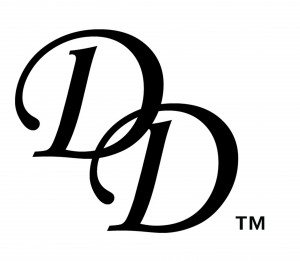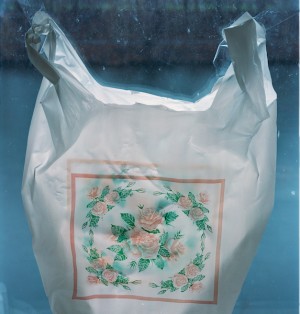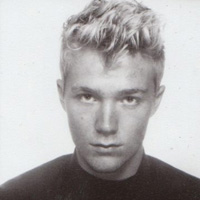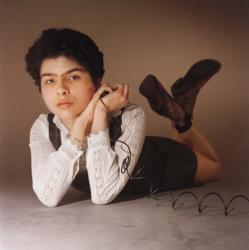Lafayette Anticipation associate curator Anna Colin talks to artist Tyler Coburn about Ergonomic Futures, a speculative project engaged with art, design, science, anthropology and writing. In this interview, Coburn discusses the research, production process and network of collaborators of a multilayered project ultimately concerned with the futures of humankind. Anna Colin: When one comes across your museum seats Ergonomic Futures (2016—) in contemporary art exhibitions—and soon in natural history, fine art, and anthropology museums—they look… [read more »]
Who did it first: The artist or the corporation?
Cara Delevingne and BFF Jourdan Dunn got matching tattoos and it’s all over the Internet. Major newspapers, blogs and other media around the world are now republishing the Instagram photo showing off their freshly-inked hips, presumably representing their last names which both start with the letter D. Coincidentally, the tattooed image is the same as the very first logo I created in 2009 when I changed the name for the distribution of my work to Debora Delmar Corporation.
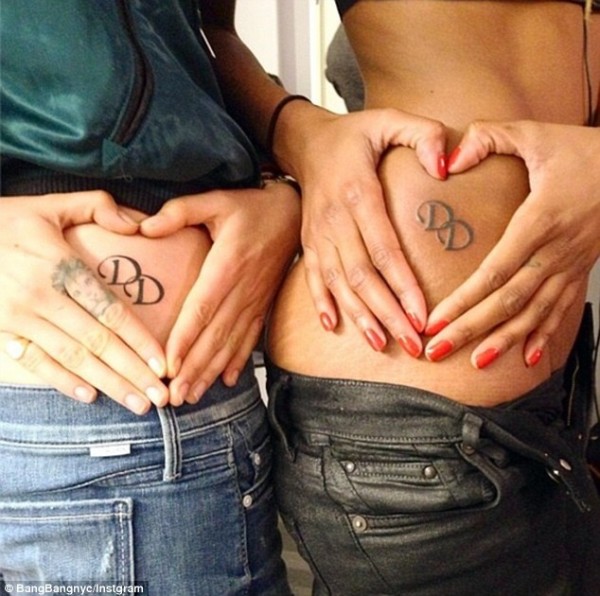
Supermodel besties Cara Delevingne, left, and Jourdan Dunn show off matching “DD” hip tattoos, revealed on Instagram on June 10. The design is an exact replica of artist Debora Delmar Corporation’s logo created in 2009.
About a year ago my friend William May, an artist who lives in LA, posted a photo on my Facebook Timeline of a billboard he had seen in Los Angeles advertising Dusk to Dawn Urgent Care, a hospital chain that offers plastic surgery as one of their urgent services. Upon closer inspection of the image, I noticed the logo they were using was a perfect replica of mine without the trademark symbol next to it. I was so shocked. I couldn’t understand how that had happened—did they find my logo on the Internet and decide to use it? Or did they somehow come up with the exact same logo without knowing? Could it be that two or more people come up with the exact same idea for a logo since we’re all exposed to the same corporate graphic design?

A Los Angeles billboard advertising Dusk to Dawn Urgent Care hospital using Delmar Corp.’s trademark logo.

Dr. Eugene Allen, CEO and founder of Dust to Dawn Urgent Care, posing in front of the same DD logo Delmar Corp. designed using Monotype Coarsiva font.
The logo is composed of two D´s in Monotype Coarsiva placed so they intersect with each other at a specific angle which I chose based on harmonic design aesthetics. When I created the logo I wanted it to be cheap and simple, mindful of how most great popular logos have been made this way (e.g. Gap, Mc Donald´s). I never registered or actually trademarked the logo because I didn’t design it merely as a logo, but instead as an extension of my work. I also added the registered trademark symbol as a play on the idea of Debora Delmar being an official, branded and institutionalized entity.
I went to the Dust to Dawn Urgent Care website which started playing a piano-version midi of Linkin Park’s “In The End.” The first image showed Dr. Eugene Allen, CEO and founder of Dust to Dawn, alongside the hospital’s mission statement. When I clicked on the ‘About Us’ photo section I found some very interesting images which only furthered my confusion. Particularly one photo, which showed the doctors posing in front of the DD logo uncannily resembling one of my senior projects at New York’s School of Visual Arts (SVA). I had to know who made it first. Was it the corporation that was taking from the artist or was it the artist who had unknowingly thought of the same logo that a graphic design company had made for a shady-looking hospital with terrible Yelp reviews?

Left: Dusk to Dawn doctors posing in front of the DD logo
Right: One of Delmar Corp.’s senior projects at NY’s School of Visual Arts
I looked at my files and the earliest one I found on my computer (which was not when I made the logo) dated September 30th 2010. I cannot recall the exact date that I came up with the logo, only that it was sometime in late 2009, saved in the SVA server (I didn’t have a laptop at the time) and not released publically until 2010. The earliest record that I was able to find of Dr. Eugene Allen discussing his website and services was dated October 28th 2010. Still too close to know.
People were telling me I should consider suing the hospital for stealing my logo but I realized that their use and reproduction of it for advertisements, web, and hospital buildings in LA was better than any form of retribution. It became more about, as my boyfriend Andrew Birk put it, “hive mind and collective consciousness.”
Every time I look at the photo of Delevingne and Dunn´s new tattoos I still think it has to be photoshopped. My brain cannot conceive what I see as my logo and two celebrity models with tattoos of it. In 2011 when there was a controversy about artist Vanessa Beecroft hiring American Apparel models under questionable agreements for her project at Art Basel I photoshopped my logo onto one of the trademarked brand’s advertisements. Was this perhaps foreshadowing the current situation?

Debora Delmar Corp.’s logo photoshopped on American Apparel models as a playful response to a 2011 controversy—foreshadowing much?
The important question here is not who came up with the logo first, or even who actually has copyright ownership. What I find fascinating is the intersection between the triangle of artist::hospital::supermodels. And maybe now the turnover rate at which the mainstream can now appropriate and propogate ideas from undercurrents (see Ghetto Gothic and Rihanna debacle). When I decided to change my name as part of my art practice in 2009, I never could have imagined this would be the result. And even if this is an accidental reproduction of my work, I see it as a bigger and better direction for my practice than I could have planned for or manifested on my own.
While attending SVA in 2010 I got t-shirts made with my logo and was selling them during open studios. Friends who knew me bought them and I gave some away, but it was difficult to convince strangers to buy them. I believe that is because people generally don’t want to wear someone else’s logo and advertise for them if it’s not worthy or popular enough to be part of a mainstream trend. Many associations of bigger brands like Dunkin Doughnuts or Dare Devil came up when people saw the double D´s.
Now when I think of the two models and the cleverly-named LA hospital using and reproducing my logo I see it as a manifestation of mainstream taking from art—a common practice. But for me, the most compelling aspect is the corporation stealing from art that is stealing from corporate/mainstream culture, i.e. the full circle nature of the process.
So who did it first? Does that matter? ♦
Founded in New York City in 2009, Debora Delmar Corp. is the name of contemporary artist Débora Delmar (born 1986, Mexico City). Usually combining sculpture, printed banners, appropriated objects and Prezi videos, the projects of Debora Delmar Corp. have explored topics such as trending color schemes, merchandising techniques, class issues, international trading markets, ethnicity, lifestyle, business ideology, home decor, local and mass production and corporate aesthetics. Debora Delmar Corp. has an upcoming solo exhibition at The Modern Art Oxford in March 2015.
